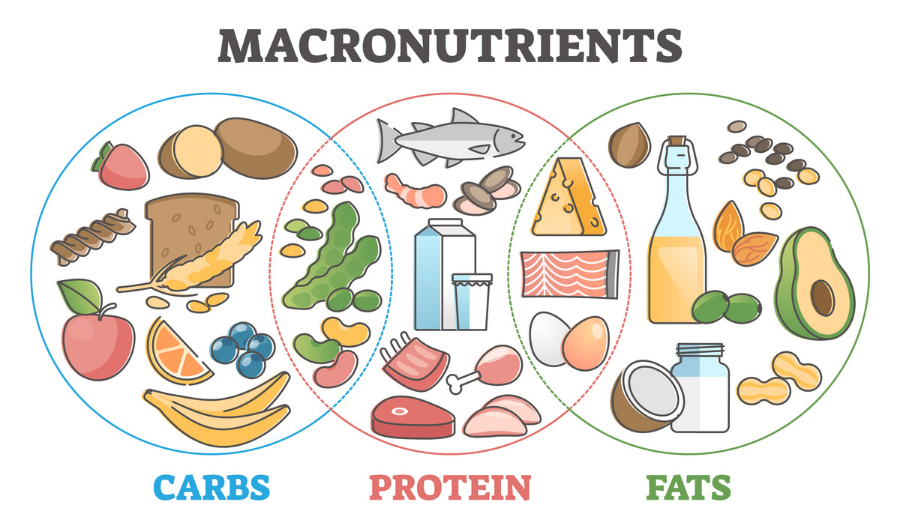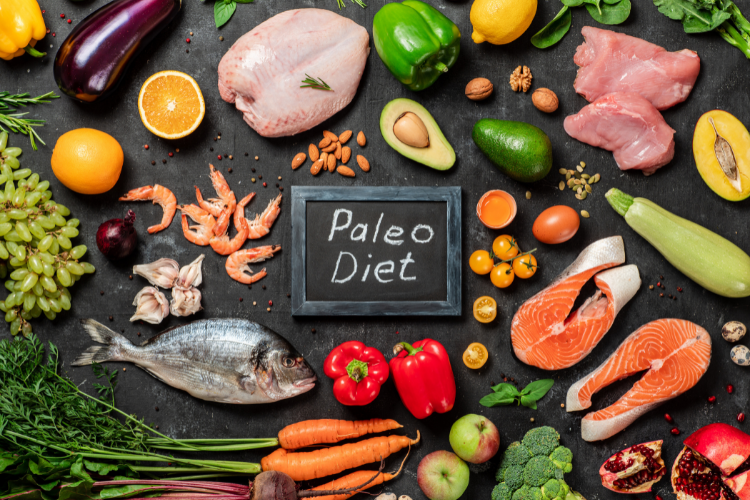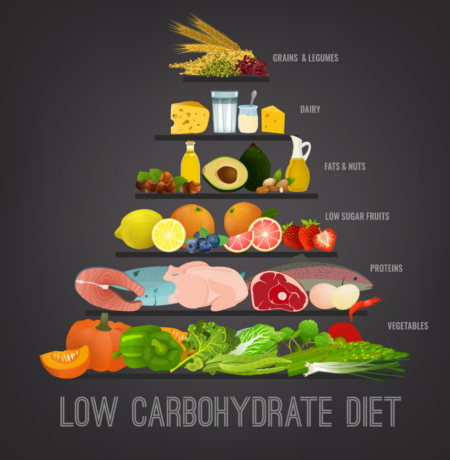Carbohydrates constitute one of the 3 major macronutrient components of our diet. Low Carbohydrate diets ( LCD) are a group of dietary interventions where carbohydrate consumption is restricted. The goal of a LCD is to improve overall health and support weight loss by reducing the number of carbohydrates a person consumes. Carbohydrates are macronutrients that your body breaks down into glucose to provide the brain and muscles with energy.

SUGAR
Sugar is the most basic form of carbohydrates and can be found naturally in fruits and vegetables or it can be added to foods like candy and soda.
STARCH
Starches are complex carbohydrates that are made up of many sugars strung together that your body will break down to make energy. An example of starches would be bread, pasta, potatoes, and corn.
FIBER
Fiber is also a complex carbohydrate but your body cannot break it down. Eating fiber helps you feel full longer and has many health benefits like preventing constipation and lowering blood sugar. Fiber is found naturally in foods like fruits, vegetables, beans, nuts, and whole grains.
Not all carbohydrates are created equally, the sugar form of carbohydrates are “empty calories”, meaning you get little to no nutritional value from them. Unlike fiber that provides health benefits and helps you stay satiated between meals to prevent you from overeating. Carbohydrates found in sugary foods, pasta, and bread will increase your blood sugar levels which results in an increase in the fat-storing hormone, insulin. To decrease insulin in your body the pancreas, which produces insulin, must be “reset”. When carbohydrate consumption is limited, less insulin is produced and stored as fat. This is why the low-carb diet is known to be very effective for losing weight and reversing certain diseases like type 2 diabetes.
Types of LCD Based On the Carbohydrate (CHO) Content
Liberal LCD
100-150 grams of CHO daily
A liberal low-carb diet allows 100-150 grams of carbs per day. This kind of LCD is best for people who are in weight maintenance, exercise frequently or sensitive to carb restriction. An example of a liberal low-carb diet would be The Atkins 100 and The Zone Diet. The Zone Diet instructs its followers to eat 40% carbs, 30% protein, and 30% fat. The main goal of this specific diet is to reduce inflammation which then leads to a reduced risk of chronic disease. While this diet is not as rigorous as ones in the moderate and strict categories, you are still advised to stay away from refined and processed foods.
Moderate LCD
50-100 grams of CHO daily
A moderate LCD allows 50-100 grams of carbs per day which helps people lose weight but at a gradual rate to ensure blood glucose levels are controlled. The Atkins 40 is a good example of a moderate LCD because you are eating 40-50 grams of carbs, 3 servings of protein, and 8 servings of vegetables each day. This specific diet is designed for people who need to lose 40 pounds or less but still want a wide variety of foods they can eat. The Atkins 40 diet allows people to eat things that sometimes aren’t allowed on low-carb diets like starchy vegetables and whole grains, as long as it fits into their carb count for the day. There are other types of Atkins diets like the Atkins 20 and Atkins 100, which allow 20 grams and 100 grams of carbohydrates respectively each day. The goal of the Atkins diet if someone starts at 20 or 40 carbs per day is to slowly increase their carb intake, after they reach their goal weight, to a sustainable level that is livable for their future.
Strict LCD
0-50 grams of CHO daily
A strict LCD allows 0-50 grams of carbs per day and is best for people wanting to lose weight quickly or lose weight by entering into ketosis. Atkins 20 and the Ketogenic diet are good examples of a strict low-carb diet. During the Keto diet, your body will make the switch from using glucose, which is carbs, to using fat for fuel. The body burns stored fat and the fat you are consuming through food to turn it into energy. Around 70% of the calories you eat when on the Ketogenic diet will come from fat, whereas the calories from carbs will only be around 5-10% of your daily calories. While eating more fat can seem nerve-racking for some people, it is actually very helpful when on a low-carb diet because it will help you feel full and satiated longer.

There is also the Paleo diet, which does not claim to be a LCD because it doesn’t have any guidelines on the number of carbs you can have per day. But since it eliminates grains and sugar, it naturally decreases carb intake. The Paleo diet is intended to be a long-term lifestyle change, rather than a diet like Atkins 20, Atkins 40, and Keto. By adjusting your eating habits and mimicking what people in the Stone Ages ate, you naturally eliminate most high-carb foods. The big difference in the Paleo diet compared to some of the other low-carb diets is that Paleo still allows for starchy vegetables and high-glycemic fruits. While this diet may not help someone lose a large amount of weight, it does improve glucose tolerance and improves appetite management.
In phase 2, you will now be having one less IP food per day. We will slowly begin to phase you off and help you continue watching carbs and portion sizes. We want to ensure you keep these healthy habits long after you phase off this program.
A low CHO diet (LCD) can improve your health if incorporated appropriately, given your unique health needs based on age, race, activity, health, and other factors affecting overall well-being.
To tailor this powerful dietary tool to your unique needs, contact us if you need further information, guidance, and direct health coaching.

